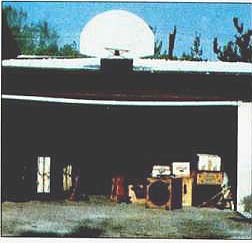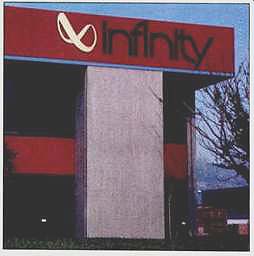ANNIVERSARY WALTZ
Koss Corporation Turns 30
Whether your local audio store carries Koss headphones or not, it might not be carrying headphones at all if Koss hadn't introduced theirs 30 years ago. There were phones long before that-they antedated speakers, in fact-but the Koss Model SP3 phones of 1958 were probably the first commercial headphones made for stereo. The SP3 was originally produced as a gimmick to draw attention to a new portable phonograph design, but they drew more attention to themselves. "Finally I got the message," says John C. Koss, who quickly went into the stereophone business. Within five years, the field was full of other stereophone makers (few of which survive), but it took longer for headphone jacks to become as universal on stereo components as they are today.
From Here to Infinity
Few presidents have actually been born in log cabins, and not all audio manufacturers started out in backyard garages. One company that did, however, was Infinity, now celebrating its 20th anniversary under founder and president Arnie Nudell. Shown here are Nudell's garage, where it all began, and a corner of the facility Infinity inhabits today.


Disabling the Dialog
I love operetta melodies, but I'm no great fan of operetta dialog: In English (as in Gilbert & Sullivan), it grows tiresome by the nth repetition; in French, it's hard for me to understand; in German, I find it only one-tenth comprehensible.
It would be nice if one of the as-yet-uncommitted subcode bits on operetta records could be used to differentiate music from dialog. Players could then be made which could be set to skip the dialog and get on with the music (or vice versa). The same one-bit coding could be used whenever a disc includes two types of material. A rock recording, for example, could be coded for fast and slow tunes, or jazz for songs with and without vocals.
Museums Go Musical
Music starts with gadgets--from primitive drums and sticks to sophisticated synthesizers--which illustrate scientific principles. And since making music is fun, learning science through music should be, too. Those were apparently the thoughts behind an exhibit called "What Makes Music?" at Philadelphia's Franklin Institute. The exhibit, which was conceived and designed by the Franklin Institute for the Science Museum Exhibit Collaborative, will be in Philadelphia until September 4th. After that, it will go on tour for two years, visiting science museums in a number of other cities.
You'll be able to see the Franklin Institute's brainchild in Charlotte, Fort Worth, Los Angeles, St. Paul, Chicago, Columbus, and Boston.
Yamaha Becomes Yamaha
Century-old Nippon Gakki changed its name, this year, to Yamaha Corporation. They have a perfect right: Founded by Torakusu Yamaha, the company began as the Yamaha Organ Manufacturing Company. As its product line broadened to include other instruments, the company changed its name to Nippon Gakki Japan Musical Instruments. Now, with the Yamaha brand name gracing instruments, motorcycles, audio equipment, music schools, sporting goods, motorboats, and bathtubs, it's time to change back.
Radio News
Our contributors have been making news in radio. Late in 1987, Totally Wired, a National Public Radio show produced by Kimberly Haas and Audio music reviewer John Diliberto, celebrated its 100th broadcast. The show also received a $50,000 grant from the National Endowment for the Arts. Totally Wired is a documentary series about new music which is broadcast in such cities as Chicago, Houston, New York, Phoenix, and Portland, Oregon.
John Sunier's Audiophile Audition also received an award last year--second prize in the Armstrong Awards for Technical Achievement.
This year, the show began its fourth season. The hour-long program is syndicated to 200 stations, many of which receive the show in digital form, via satellite. The stations are urged not to use limiters or other processors so as to preserve the wide dynamic range. Some stations even air the show at reduced levels to avoid squashing signal peaks.
Oops!!
In the December 1986 "Spectrum," I gave the time for one revolution of an LP as 1.8 S, but a letter from an authoritative-sounding reader temporarily convinced me that the figure should be 1 divided by 1.8, or 0.556 S, so I ran an update in December 1987. The deluge of letters that followed has convinced me I had it right the first time: 1.8 S it is.
(adapted from Audio magazine, Aug. 1988; by IVAN BERGER)
= = = =